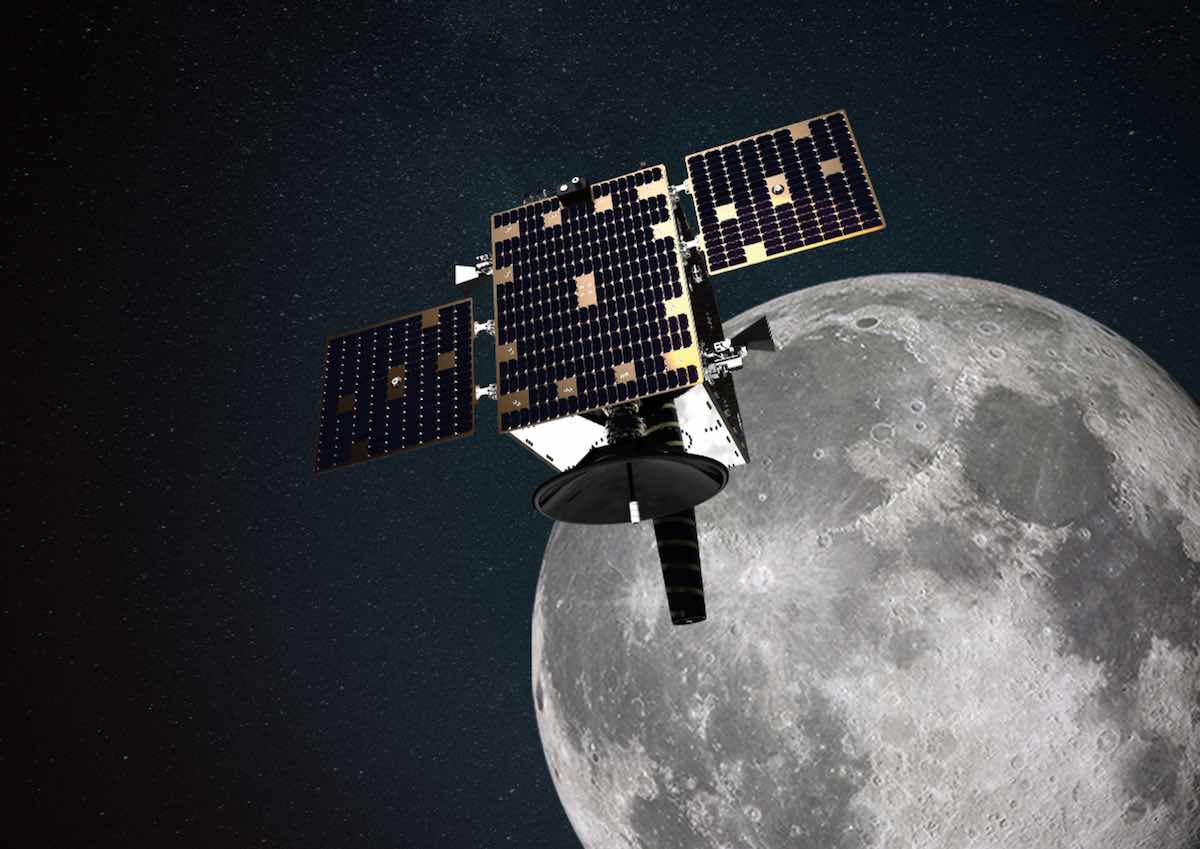
NASA and the European Space Agency have agreed that a pathfinder data relay satellite to support missions on the polar regions and the far side of the moon will be launched on a commercial U.S. rocket, deepening trans-Atlantic ties on the Artemis lunar program, officials said Wednesday.
The Lunar Pathfinder spacecraft, now being developed by the UK company SSTL with support from ESA, will link missions operating at the moon with mission controllers on Earth. It’s the first step in a program that could eventually include a network of communications satellites in lunar orbit, providing relay capability similar to spacecraft orbiting Earth.
ESA calls the concept for a future lunar communications and navigation network Moonlight.
NASA and ESA officials signed an agreement Wednesday to partner on the Lunar Pathfinder mission. NASA will provide a U.S. launch vehicle for Lunar Pathfinder through the agency’s Commercial Lunar Payload Services, or CLPS, program.
Last year, ESA announced it signed up to use the data relay service from the Lunar Pathfinder mission, which will be operated by SSTL on a commercial basis. The new agreement signed Wednesday will allow ESA to provide communications capacity from Lunar Pathfinder to NASA, in exchange for NASA’s responsibility to pay for its launch.
NASA will procure a launch service and ride to the moon for Lunar Pathfinder from a roster of CLPS providers, including Astrobotic, Blue Origin, Ceres Robotics, Deep Space Systems, Draper, Firefly Aerospace, Intuitive Machines, Lockheed Martin, Masten Space Systems, Moon Express, Orbit Beyond, Sierra Space, SpaceX, and Tyvak Nano-Satellite Systems.
The space agencies will also collaborate in tests using satellite navigation signals and laser ranging, demonstrating a satnav positioning fix in lunar orbit for the first time, according to ESA.
Lunar Pathfinder, which will weigh about 620 pounds (280 kilograms), will circle the moon in an elongated, or highly elliptical, orbit. The orbit will allow the spacecraft to loiter over the polar regions and far side of the moon, providing extended communications coverage for missions out of reach of antennas on Earth.
NASA and ESA are already partners on the Artemis lunar program, with Europe supplying propulsion and power modules for NASA’s Orion crew spacecraft designed to ferry astronauts between Earth and the moon. ESA has also agreed to provide a module and refueling technology for NASA’s Gateway mini-space station destined to orbit the moon, and is discussing plans to develop a large cargo lander to deliver supplies to the lunar surface.
In exchange, NASA is providing ESA with three flight opportunities for European astronauts to live and work on-board the Gateway station near the moon. Officials said Wednesday a European astronaut could also fly to the moon’s surface with NASA, but a firm schedule for a joint surface mission has not been decided.
“We look forward to having an ESA astronaut join us on the surface of the moon and continuing to build on our longstanding, critical partnership” said NASA Administrator Bill Nelson.
Email the author.
Follow Stephen Clark on Twitter: @StephenClark1.
from Spaceflight Now https://ift.tt/7NGo6n5
via World Space Info







0 comments:
Post a Comment